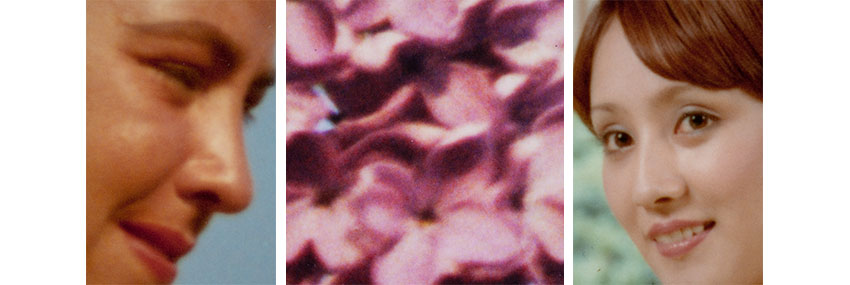
Heritage conservation tends to focus on what has been admired for many centuries. Other specialties, such as photographic materials, have only been around for a relatively short period of time. Photography is nonetheless a compelling medium with an array of different processes and variants within them. Research in this field shares the same goals as the one done for other materials: to better understand how, when and where objects were made, what conditions caused them to deteriorate and ultimately how to best preserve them. Studies such as the one presented by Christine Andraud at the AIC-CAC conference aims to bridge the knowledge gap in the field.
As Andraud states in her abstract, color photographs, particularly those classified as chromogenic, lack the kind of study that black and white processes have already received. This is exactly what caught my attention: why is that? Although we are now in the digitally born media age, color photographs have been commercially available since the late 1940s. Until not that long ago, they were the most common type of photographic technique, used by artists and amateurs alike. Today we can find examples of chromogenic prints in fine-art museums as well as in personal archives. Their widespread use is exactly the reason why they should be studied further.
For the purpose of identifying these types of prints analytically, Andraud used fiber optical reflectance spectroscopy (FORS). This is a non-destructive and non-contact technique that has long been used to analyze pigments in paintings. The same technique can also help us in the identification of dyes used in photographic emulsions. Better results are obtained when the device is placed in contact with the sample, but according to Andraud, this doesn’t seem to cause damage.
Dyes used in photography were not always the most chemically stable. In fact, their formulas changed often precisely to change this trend and improve their reliability. The appearance of these photographs can be quite different from the one they had when they were made. Consequently, their visible spectra have almost certainly changed. It is therefore considered more accurate to characterize these dyes in the near infrared region, where the organic functional groups’ fingerprint can more accurately be identified.
Using samples from known manufacturers and dates and the Fischer criterion’s statistical model, the author created a chromogenic processes database, to which other samples of unknown provenance can be compared to. So far, data has been collected for prints made from the 1960s up to the 2000s, by different manufacturers. Kodak samples seem to be the ones that yield better results so far (within 3% error). The author’s goal is to continue this project by analyzing more samples (particularly produced in the 1950s to 1970s) and therefore increase the accuracy of the obtained results.
This method seems to be very promising and I personally hope to hear about it again in the future.
Skip to content
AIC Blog Archives: Conservators Converse
Former Blog of the American Institute for Conservation
